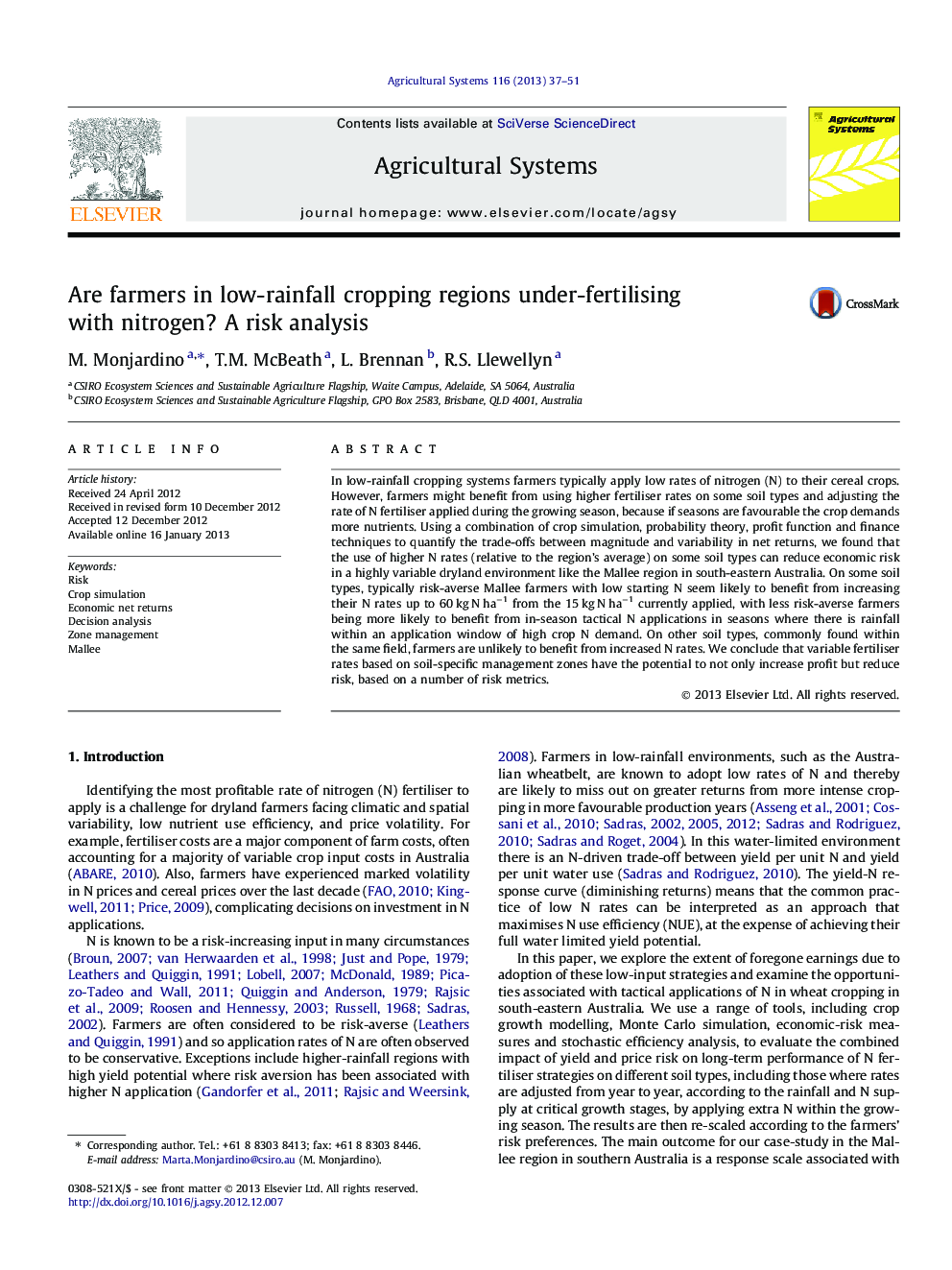| کد مقاله | کد نشریه | سال انتشار | مقاله انگلیسی | نسخه تمام متن |
|---|---|---|---|---|
| 4491338 | 1623254 | 2013 | 15 صفحه PDF | دانلود رایگان |

In low-rainfall cropping systems farmers typically apply low rates of nitrogen (N) to their cereal crops. However, farmers might benefit from using higher fertiliser rates on some soil types and adjusting the rate of N fertiliser applied during the growing season, because if seasons are favourable the crop demands more nutrients. Using a combination of crop simulation, probability theory, profit function and finance techniques to quantify the trade-offs between magnitude and variability in net returns, we found that the use of higher N rates (relative to the region’s average) on some soil types can reduce economic risk in a highly variable dryland environment like the Mallee region in south-eastern Australia. On some soil types, typically risk-averse Mallee farmers with low starting N seem likely to benefit from increasing their N rates up to 60 kg N ha−1 from the 15 kg N ha−1 currently applied, with less risk-averse farmers being more likely to benefit from in-season tactical N applications in seasons where there is rainfall within an application window of high crop N demand. On other soil types, commonly found within the same field, farmers are unlikely to benefit from increased N rates. We conclude that variable fertiliser rates based on soil-specific management zones have the potential to not only increase profit but reduce risk, based on a number of risk metrics.
► Higher N rates increase profit and less so risk in marginal dryland environments.
► Support for variable fertiliser rate application on soil-specific management zones.
► Potential for in-season fertilisation on sandy soils to help cope with higher risk.
► Support for sustainable intensification of the Mallee based on several risk metrics.
► Mallee farmers sit around the 0.01–0.015 level on the (CARA) risk aversion scale.
Journal: Agricultural Systems - Volume 116, March 2013, Pages 37–51